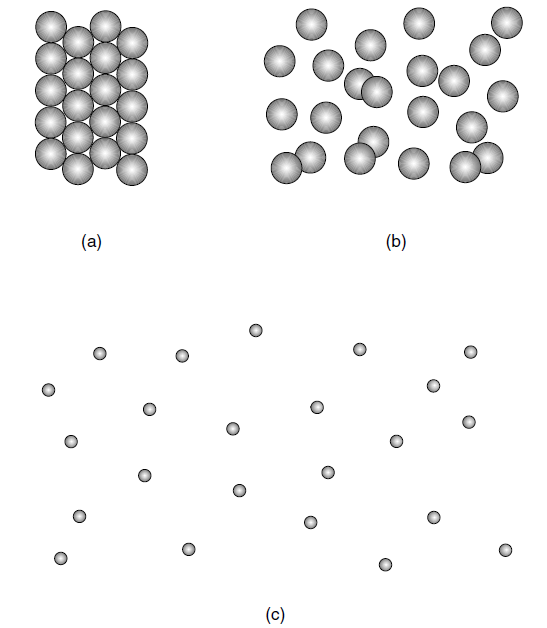
تاريخ الفيزياء

علماء الفيزياء


الفيزياء الكلاسيكية

الميكانيك

الديناميكا الحرارية


الكهربائية والمغناطيسية

الكهربائية

المغناطيسية

الكهرومغناطيسية


علم البصريات

تاريخ علم البصريات

الضوء

مواضيع عامة في علم البصريات

الصوت


الفيزياء الحديثة


النظرية النسبية

النظرية النسبية الخاصة

النظرية النسبية العامة

مواضيع عامة في النظرية النسبية

ميكانيكا الكم

الفيزياء الذرية

الفيزياء الجزيئية


الفيزياء النووية

مواضيع عامة في الفيزياء النووية

النشاط الاشعاعي


فيزياء الحالة الصلبة

الموصلات

أشباه الموصلات

العوازل

مواضيع عامة في الفيزياء الصلبة

فيزياء الجوامد


الليزر

أنواع الليزر

بعض تطبيقات الليزر

مواضيع عامة في الليزر


علم الفلك

تاريخ وعلماء علم الفلك

الثقوب السوداء


المجموعة الشمسية

الشمس

كوكب عطارد

كوكب الزهرة

كوكب الأرض

كوكب المريخ

كوكب المشتري

كوكب زحل

كوكب أورانوس

كوكب نبتون

كوكب بلوتو

القمر

كواكب ومواضيع اخرى

مواضيع عامة في علم الفلك

النجوم

البلازما

الألكترونيات

خواص المادة


الطاقة البديلة

الطاقة الشمسية

مواضيع عامة في الطاقة البديلة

المد والجزر

فيزياء الجسيمات


الفيزياء والعلوم الأخرى

الفيزياء الكيميائية

الفيزياء الرياضية

الفيزياء الحيوية

الفيزياء العامة


مواضيع عامة في الفيزياء

تجارب فيزيائية

مصطلحات وتعاريف فيزيائية

وحدات القياس الفيزيائية

طرائف الفيزياء

مواضيع اخرى
ALWAYS IN MOTION
المؤلف:
S. Gibilisco
المصدر:
Physics Demystified
الجزء والصفحة:
p 238
18-9-2020
1826
ALWAYS IN MOTION
Molecules also can form from two or more atoms of a single element. Oxygen tends to occur in pairs most of the time in Earth’s atmosphere. Thus an oxygen molecule is sometimes denoted by the symbol O2, where the O represents oxygen, and the subscript 2 indicates that there are two atoms per molecule. The water molecule is symbolized H2O because there are two atoms of hydrogen and one atom of oxygen in each molecule. Sometimes oxygen atoms are by themselves; then we denote the molecule simply as O. Sometimes there are three atoms of oxygen grouped together. This is the gas called ozone that has received attention in environmental news. It is written O3.

Fig. 1. Simplified rendition of molecules in a solid (a), in a liquid (b), in a gas (c). The gas molecules are shown smaller for illustrative purposes only.
Molecules are always moving. The speed with which they move depends on the temperature. The higher the temperature, the more rapidly the molecules move around. In a solid, the molecules are interlocked in a sort of rigid pattern, although they vibrate continuously (Fig. 1a). In a liquid, they slither and slide around (see Fig. 1b). In a gas, they are literally whizzing all over the place, bumping into each other and into solids and liquids adjacent to the gas (see Fig. 1c).
 الاكثر قراءة في الفيزياء الجزيئية
الاكثر قراءة في الفيزياء الجزيئية
 اخر الاخبار
اخر الاخبار
اخبار العتبة العباسية المقدسة

الآخبار الصحية















 "المهمة".. إصدار قصصي يوثّق القصص الفائزة في مسابقة فتوى الدفاع المقدسة للقصة القصيرة
"المهمة".. إصدار قصصي يوثّق القصص الفائزة في مسابقة فتوى الدفاع المقدسة للقصة القصيرة (نوافذ).. إصدار أدبي يوثق القصص الفائزة في مسابقة الإمام العسكري (عليه السلام)
(نوافذ).. إصدار أدبي يوثق القصص الفائزة في مسابقة الإمام العسكري (عليه السلام) قسم الشؤون الفكرية يصدر مجموعة قصصية بعنوان (قلوب بلا مأوى)
قسم الشؤون الفكرية يصدر مجموعة قصصية بعنوان (قلوب بلا مأوى)


















